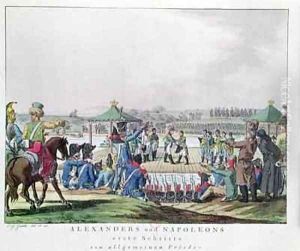Christian Gottfried Geissler Paintings
Christian Gottfried Geissler was a German artist and engraver born in 1770 in Leipzig, Saxony. He is primarily known for his detailed engravings and etchings, which captured a variety of subjects including landscapes, portraits, and architectural views. Geissler's works were appreciated for their precision and clarity, which showcased his skill in the art of printmaking.
Geissler's upbringing and early life are not thoroughly documented, but it is known that he received his artistic training in his hometown of Leipzig, which was a significant cultural center in Germany at the time. Leipzig had a rich tradition of arts and music, and the environment was conducive to the development of a young artist's skills and exposure to various artistic influences.
Throughout his career, Geissler worked on numerous commissions and his engravings were often included in books and periodicals, serving as illustrations to accompany texts. His engravings were highly detailed, requiring a meticulous hand and a great deal of patience. This attention to detail made his work popular among publishers and the public alike.
Despite the quality of his work, Geissler did not gain the same level of fame as some of his contemporaries. Nevertheless, he was a respected figure within the artistic community, and his engravings remain a testament to the craftsmanship of the period. His works continue to be of interest to collectors and art historians who study the art of engraving and printmaking in the 18th and 19th centuries.
Geissler lived through a period of significant change in Europe, witnessing the effects of the French Revolution, Napoleonic wars, and the eventual rise of German nationalism. These events influenced the cultural landscape of the time and provided a rich backdrop for artists of the era.
Christian Gottfried Geissler passed away in 1844, leaving behind a legacy of detailed and precise artworks that contribute to our understanding of the printmaking traditions of his time. His engravings still serve as valuable historical records of the landscapes and urban scenes of early 19th century Germany.
